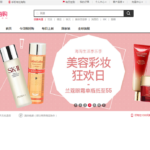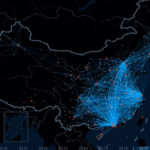Chinese Consumer Behavior and Motivation: Which consumer group is right for your brand
Since China committed to its “reform and opening” policy in 1978, the Chinese economy has boomed, and many international businesses have established a presence in China. However, some foreign businesses are hesitant to enter the Chinese market because they do not fully understand Chinese consumer behavior. Chinese consumer behavior is indeed complex, as consumer trends vary among different groups and regions in China. Appreciating and understanding the preferences and mindsets of different consumer groups in China is key to entering or expanding further into the Chinese market.
Who are Chinese consumers?
As of 2018, China’s population is 59.58% urban and 40.42% rural. Guangdong and Shandong provinces have the highest numbers of population in China with over 100 million population each, followed by Henan (96 million), Sichuan (83 million), and Jiangsu (80 million) provinces.
Chinese people aged 45-49 and 50-54 take up the highest ratios of total population, followed by that of 30-34 and 25-29. The Gross Domestic Products (GDP) per capita was $9,771 in 2018 and is expected to grow to $10,099 in 2019. The average per capita disposable income and consumption expenditure nationwide was 28,228 yuan and 19,853 yuan respectively. The households in eastern region have a higher per capita disposable income level.
Chinese Consumer behavior by age demographic
Middle age and elderly consumer behavior
Consumers born before 1960 can be divided into two subgroups, frugal retired and wealthy retired. Both of these groups grew up in tough and difficult times. However, the frugal retired did not receive a systematic education and worked at state-owned enterprises. As a result, this group is very price sensitive. The wealthy retired primarily worked in government and government-funded enterprises that in general provided higher wages and retirement benefits. For this reason, they are less price sensitive than the frugal retired and care more about quality than cost.
Consumers that grew up during the cultural revolution (1966 – 1976), can also be divided into two subgroups, frugal forties, and wealthy forties. Both of these groups grew up in the early stage of the reform era, and hence they swing between traditional and new trends. The frugal forties generally work in various companies – state-owned, private, and foreign-invested companies. They usually earn modest incomes. On the other hand, the wealthy forties generally have higher wages and are hence more willing to pay for premium quality products. They will have fewer responsibilities with respect to childcare and hence will have a higher propensity for spending money on entertainment, groceries, travel, and high-quality healthcare products.
Chinese millennial consumer behavior
The next group of Chinese consumers can be termed as the thirties. This group is characterized by having grown up in a more open environment and being well-educated. This group of consumers save less and spend more money on entertainment. This group is likely to spend a significant amount of money, as members of this group will have to provide for their parents, their children, and themselves.
Consumers in the first generation of the one-child policy henceforth referred to as the twenties have the opposite shopping habits of their parents. They are less inclined to save their money and spend a larger proportion of their wages on various products and services. They are particularly fond of trendy products and more often use online shopping to purchase goods. Although they are likely to become more conservative spenders as they establish new families, this group is nonetheless likely to be more willing to spend money than previous generations.
Migrant workers
Migrant workers, who are generally 25-45 years old are rural residents who moved to the city to get work to provide for their rural families. This group has more in common with the older generations, as they are very price sensitive and more inclined to accumulate wealth rather than spending it. However, this group is projected to grow in wealth, and as this group grows in wealth and becomes integrated into the urban economy its members will be more inclined to spend their money.
Wealthy Chinese consumers
The last group of Chinese consumers, “the wealthy”, holds assets over $1.5 million RMB. This number is more than $1 million and is rapidly increasing. This group is concentrated in large urban areas, such as Beijing, Guangdong, and Shanghai, which houses about half of the members of this group. As expected, Chinese wealthy are the least price sensitive group and the most willing to spend money on premium quality products. This group of consumers is particularly attracted to imported products.
How COVID-19 changed Chinese consumer behavior
Due to the impact of COVID-19 on Chinese consumers, the household spending is projected to fall by -2.8% y-o-y in 2020, from the pre-COVID-19 forecast of a growth of 7.2% y-o-y. Non-essential expenditure (tourism, restaurants, entertainment outlets, clothing and footwear etc.) are the most impacted, and non-essential businesses continue to record y-o-y contractions. Consequently, total retail sales in April 2020 dropped by 7.5% y-o-y compared to April 2019’s. Whilst, essential purchases (food & drinks and health products) and e-commerce demand remain robust. In March 2020, with the lockdown easing and businesses re-opened, purchases of business essentials (office appliances, communication sales) began to display positive growth.
The government has put forward a series of measures attending to tackle China’s economic recession incurred by COVID-19, including 4 trillion RMB of spending on businesses and consumers. These measures marked the beginning of a new era of economic reforms in China. It’s apparent that consumer behaviors are also susceptible to changes in the post-lockdown world, wherein estimate of China’s real GDP expanded in April 2020 being only 0.8% y-o-y.
However, a nascent sign shows that majority of consumer and retail sectors have seen improvement since March, as lockdown eases and consumers start to venture out homes. Household appliances and sporting goods are displaying strong recovery amid strong retail sales of food, drink, and medicine. As for food and beverage consumption, however, it’s highlighted that people will turn to local food supply like neighborhood convenience stores and markets more during this period of time. This shift of consumer behavior deepens as the latest news covering that coronavirus detected on chopping board for imported salmon in Beijing’s market.
Consumer behavior in China returns to normal after COVID-19
Although consumer behaviors have not recovered to the pre-COVID-19 normal yet, nascent signs of recovery are emerging in China. And as the country enters into a new era of reforms in an unprecedentedly dynamic time, reinforced by technological innovations, the market is going to be a battleground for existing businesses and new entrants. Hence, a comprehensive understanding of the market and its people become more essential for businesses these days.
Contact us for any question on the Chinese market
Consumption Upgrade in modern China: 2.0 era happening across the country
With the further penetration of advanced technologies and changing consumption structure, the new phenomenon is emerging in the consumer market in China.
Effects of mobile payment in Mainland China
The number of people accesses to the Internet via mobile devices (phones, pads etc.) has reached 788 million by June 2018, accounting for 98.3% of all netizens. Because of this, mobile payment becomes prevalent in almost every part of China. With the wide adoption of mobile payment, purchase behavior in China has dramatically changed in the direction of more convenience and efficiency. It’s so common that street vendors, street performers and taxi drivers are all being paid by mobile payment AliPay and WeChat Pay; cash becoming rare in recent three years, mostly because of already sophisticated mobile payments infrastructure in China. New retail model, furthermore, conceived by Alibaba, stems from proliferation of big data collected from numerous of customers and its application Hema Supermarket, for example, is influencing consumer behavior in big cities (Shanghai, Beijing and Hangzhou) by combining online and offline purchase together so that consumers could buy things online without restrictions of brick-and-mortar shops.
Considerable Chinese aging population triggering emerging needs
The inevitable aging population due to one-child policy drives a major shift in China’s demography. The growth of elderly consumers will create new business opportunities, particularly in elderly care, health and wellness and home appliances sectors. In addition to that, higher life expectancy, a major motivation for older people, is expected to provide business potential especially for health care and eating industries.
The younger generation (18-35 years old) contributing to a large proportion of consumption in China
People aged 18 to 35 have unique characteristics influenced by the internet revolution, and this group spent $1.5 trillion for consumer goods in 2016, more likely continued sharp increase in purchasing in the condition of omnichannel e-commerce. Their daily lives are being affected by numerous information provided by online platforms and news, educating as well as being educated to appreciate and enjoy a better quality of life and environment. They do not like to save money, do not pay for cost-effective, but pay for services, personalized products to comply with their personalities and expectations of life. This brings about structural opportunities for consumer markets in ongoing consumer motivations.
The increase of disposable income impacts on consumer behavior in rural areas in Mainland China
China has considerably uneven income distributions, but the government has been improving income inequality over years. People from rural places are catching up with consumption upgrade in tier1, tier2, tier3 cities. According to the State Statistical Bureau, the average of disposal income keeps increasing at roughly 7 percent from 2017 Q1 to 2018 Q2, whereas the corresponding consumer expenditure boosts at the growth rate from 6.8 percent to 10.1 percent, from 2017 Q1 to 2018 Q2.
In conclusion, when marketing to Chinese consumers, a firm does well to target a group who’s demands and idiosyncrasies are consistent with the firm’s offering. In this article, a brief presentation of these groups has been presented. It is also important to heed recent trends in Chinese consumer behavior, which has been impacted by the drop in China’s economic growth.
Case Study: Online Retail Sector
Daxue Consulting helps clients maximize their margin and revenue in China at every step of the consumer journey—from acquisition to retention. Daxue Consulting provided one of its clients in the online retail sector an in-depth analysis of the behaviors and needs of their brand’s target market in China. The report helped the client to determine and identify the best ways of reaching the customers. The project started with a desk research. Our consultants in China scanned the internet, the market, and the client’s direct competitors, in order to find as much relevant information for the industry as possible.
An online survey was sent to the consumer panel in the second part of the project, and the panel members recorded all the details of their purchases on the client’s website. The report helped the client to understand the main drivers of its brand performance in China and the best way to achieve its targets with more buyers and better spending per buyer.
Watch our latest Video on Facebook about the Chinese Consumer:
Daxue Consulting is a China-focused professional consulting firm offering strategic-driven research
To know more about the Chinese Consumer behavior, do not hesitate to contact us at dx@daxueconsulting.com















